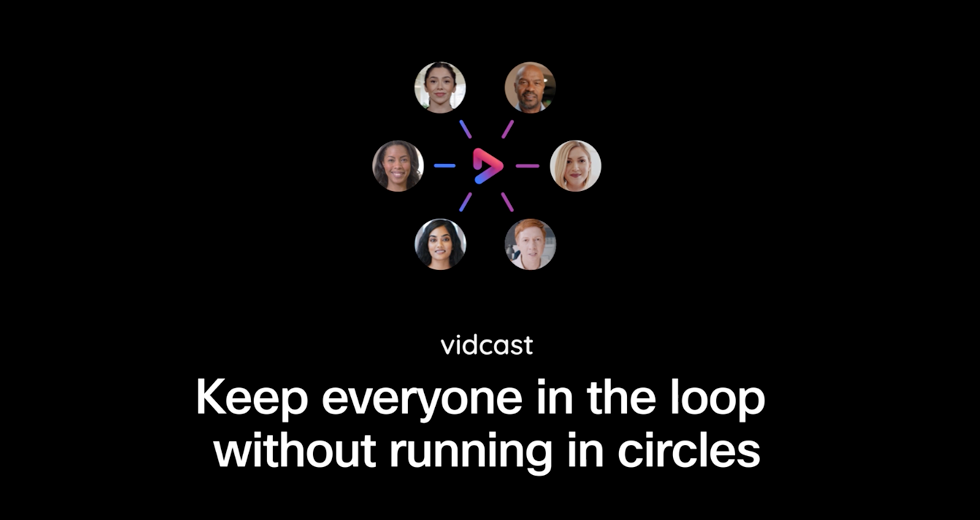One of the underlying challenges in healthcare is access to quality, affordable care. Care used to be constrained by time and place. But today, video conferencing is opening up new opportunities to close gaps in patient care and management. And the impact of telehealth is broad. It includes margin management, clinical scale, care continuity, market expansion, population health management, and more. Telehealth has game-changing potential, and the use cases are diverse [1].  Here are a few examples of how we are helping increase access to care: Telespecialty: In Vietnam, patients were traveling hours away from their home to seek superior care. With collaboration technology, experts at Viet Duc Hospital give guidance to regional doctors. They can consult on cases and provide training through live surgeries. With the help of this technology, patients can get the quality of care they need close to home. Learn more. Virtual conferencing: Mercy Virtual Care Center has over 40,000 employees working at 400 locations across the nation. They use Cisco Webex technology to connect and train their workers. Connecting nurses and other care team members decreases travel time and increases continuity of care. It means real-time collaboration across all locations. Employees are able to take meetings from anywhere on any device, including mobile. Learn more. Virtual specialty care: Every year, the NYC Health + Hospital’s Correctional Health Services cares for over 55,000 patients. Using Cisco Webex, they provide direct specialist care without the need for transportation or in-person sessions. Access to specialists has helped provide tailored attention to diseases more prevalent for incarcerated individuals, including Hepatitis C, lowering barriers to high quality healthcare. Learn more. For more than 20 years, Cisco has been working with hospitals to use our collaboration, mobility, networking, security, and data center technologies to support telehealth and other innovative healthcare solutions at more than 17,000 healthcare organizations in 118 countries. Digital transformation in the healthcare industry is not a new initiative, but we still have a long way to go and a lot to learn along the way. With Cisco Webex, we’re just scratching the surface of what is possible in telehealth, extending access to patients, clinicians, and researchers around the world. Affordable access to healthcare technology and services is vital and will only become more critical as healthcare organizations transform. When data drives innovative experiences, providers become more accessible, affordable, and deliver quality health services. And this cutting-edge care starts with the network. The ability to sense and understand everything happening across applications, users, and devices makes a difference. The impact is huge when it comes to personalizing care, streamlining clinical experiences, optimizing IT and business operations, and protecting patients and data. So you can focus on what matters: caring for patients. Learn more about what Cisco is doing to help providers deliver services where patients, clinicians, administrators, and IT work together to improve access and reduce costs at Cisco.com/go/healthcare.
Here are a few examples of how we are helping increase access to care: Telespecialty: In Vietnam, patients were traveling hours away from their home to seek superior care. With collaboration technology, experts at Viet Duc Hospital give guidance to regional doctors. They can consult on cases and provide training through live surgeries. With the help of this technology, patients can get the quality of care they need close to home. Learn more. Virtual conferencing: Mercy Virtual Care Center has over 40,000 employees working at 400 locations across the nation. They use Cisco Webex technology to connect and train their workers. Connecting nurses and other care team members decreases travel time and increases continuity of care. It means real-time collaboration across all locations. Employees are able to take meetings from anywhere on any device, including mobile. Learn more. Virtual specialty care: Every year, the NYC Health + Hospital’s Correctional Health Services cares for over 55,000 patients. Using Cisco Webex, they provide direct specialist care without the need for transportation or in-person sessions. Access to specialists has helped provide tailored attention to diseases more prevalent for incarcerated individuals, including Hepatitis C, lowering barriers to high quality healthcare. Learn more. For more than 20 years, Cisco has been working with hospitals to use our collaboration, mobility, networking, security, and data center technologies to support telehealth and other innovative healthcare solutions at more than 17,000 healthcare organizations in 118 countries. Digital transformation in the healthcare industry is not a new initiative, but we still have a long way to go and a lot to learn along the way. With Cisco Webex, we’re just scratching the surface of what is possible in telehealth, extending access to patients, clinicians, and researchers around the world. Affordable access to healthcare technology and services is vital and will only become more critical as healthcare organizations transform. When data drives innovative experiences, providers become more accessible, affordable, and deliver quality health services. And this cutting-edge care starts with the network. The ability to sense and understand everything happening across applications, users, and devices makes a difference. The impact is huge when it comes to personalizing care, streamlining clinical experiences, optimizing IT and business operations, and protecting patients and data. So you can focus on what matters: caring for patients. Learn more about what Cisco is doing to help providers deliver services where patients, clinicians, administrators, and IT work together to improve access and reduce costs at Cisco.com/go/healthcare.
[1]https://intel.sg2.com/-/media/Publications/2016/Virtual-Health-StarterKit/Virtual_Health_Full_Kit_2.ashx?la=en
 Here are a few examples of how we are helping increase access to care: Telespecialty: In Vietnam, patients were traveling hours away from their home to seek superior care. With collaboration technology, experts at Viet Duc Hospital give guidance to regional doctors. They can consult on cases and provide training through live surgeries. With the help of this technology, patients can get the quality of care they need close to home. Learn more. Virtual conferencing: Mercy Virtual Care Center has over 40,000 employees working at 400 locations across the nation. They use Cisco Webex technology to connect and train their workers. Connecting nurses and other care team members decreases travel time and increases continuity of care. It means real-time collaboration across all locations. Employees are able to take meetings from anywhere on any device, including mobile. Learn more. Virtual specialty care: Every year, the NYC Health + Hospital’s Correctional Health Services cares for over 55,000 patients. Using Cisco Webex, they provide direct specialist care without the need for transportation or in-person sessions. Access to specialists has helped provide tailored attention to diseases more prevalent for incarcerated individuals, including Hepatitis C, lowering barriers to high quality healthcare. Learn more. For more than 20 years, Cisco has been working with hospitals to use our collaboration, mobility, networking, security, and data center technologies to support telehealth and other innovative healthcare solutions at more than 17,000 healthcare organizations in 118 countries. Digital transformation in the healthcare industry is not a new initiative, but we still have a long way to go and a lot to learn along the way. With Cisco Webex, we’re just scratching the surface of what is possible in telehealth, extending access to patients, clinicians, and researchers around the world. Affordable access to healthcare technology and services is vital and will only become more critical as healthcare organizations transform. When data drives innovative experiences, providers become more accessible, affordable, and deliver quality health services. And this cutting-edge care starts with the network. The ability to sense and understand everything happening across applications, users, and devices makes a difference. The impact is huge when it comes to personalizing care, streamlining clinical experiences, optimizing IT and business operations, and protecting patients and data. So you can focus on what matters: caring for patients. Learn more about what Cisco is doing to help providers deliver services where patients, clinicians, administrators, and IT work together to improve access and reduce costs at Cisco.com/go/healthcare.
Here are a few examples of how we are helping increase access to care: Telespecialty: In Vietnam, patients were traveling hours away from their home to seek superior care. With collaboration technology, experts at Viet Duc Hospital give guidance to regional doctors. They can consult on cases and provide training through live surgeries. With the help of this technology, patients can get the quality of care they need close to home. Learn more. Virtual conferencing: Mercy Virtual Care Center has over 40,000 employees working at 400 locations across the nation. They use Cisco Webex technology to connect and train their workers. Connecting nurses and other care team members decreases travel time and increases continuity of care. It means real-time collaboration across all locations. Employees are able to take meetings from anywhere on any device, including mobile. Learn more. Virtual specialty care: Every year, the NYC Health + Hospital’s Correctional Health Services cares for over 55,000 patients. Using Cisco Webex, they provide direct specialist care without the need for transportation or in-person sessions. Access to specialists has helped provide tailored attention to diseases more prevalent for incarcerated individuals, including Hepatitis C, lowering barriers to high quality healthcare. Learn more. For more than 20 years, Cisco has been working with hospitals to use our collaboration, mobility, networking, security, and data center technologies to support telehealth and other innovative healthcare solutions at more than 17,000 healthcare organizations in 118 countries. Digital transformation in the healthcare industry is not a new initiative, but we still have a long way to go and a lot to learn along the way. With Cisco Webex, we’re just scratching the surface of what is possible in telehealth, extending access to patients, clinicians, and researchers around the world. Affordable access to healthcare technology and services is vital and will only become more critical as healthcare organizations transform. When data drives innovative experiences, providers become more accessible, affordable, and deliver quality health services. And this cutting-edge care starts with the network. The ability to sense and understand everything happening across applications, users, and devices makes a difference. The impact is huge when it comes to personalizing care, streamlining clinical experiences, optimizing IT and business operations, and protecting patients and data. So you can focus on what matters: caring for patients. Learn more about what Cisco is doing to help providers deliver services where patients, clinicians, administrators, and IT work together to improve access and reduce costs at Cisco.com/go/healthcare.[1]https://intel.sg2.com/-/media/Publications/2016/Virtual-Health-StarterKit/Virtual_Health_Full_Kit_2.ashx?la=en



